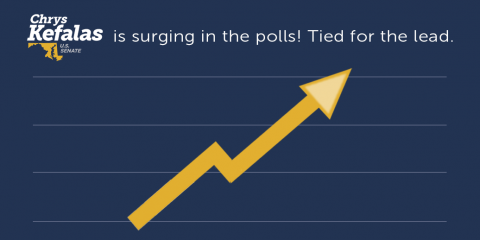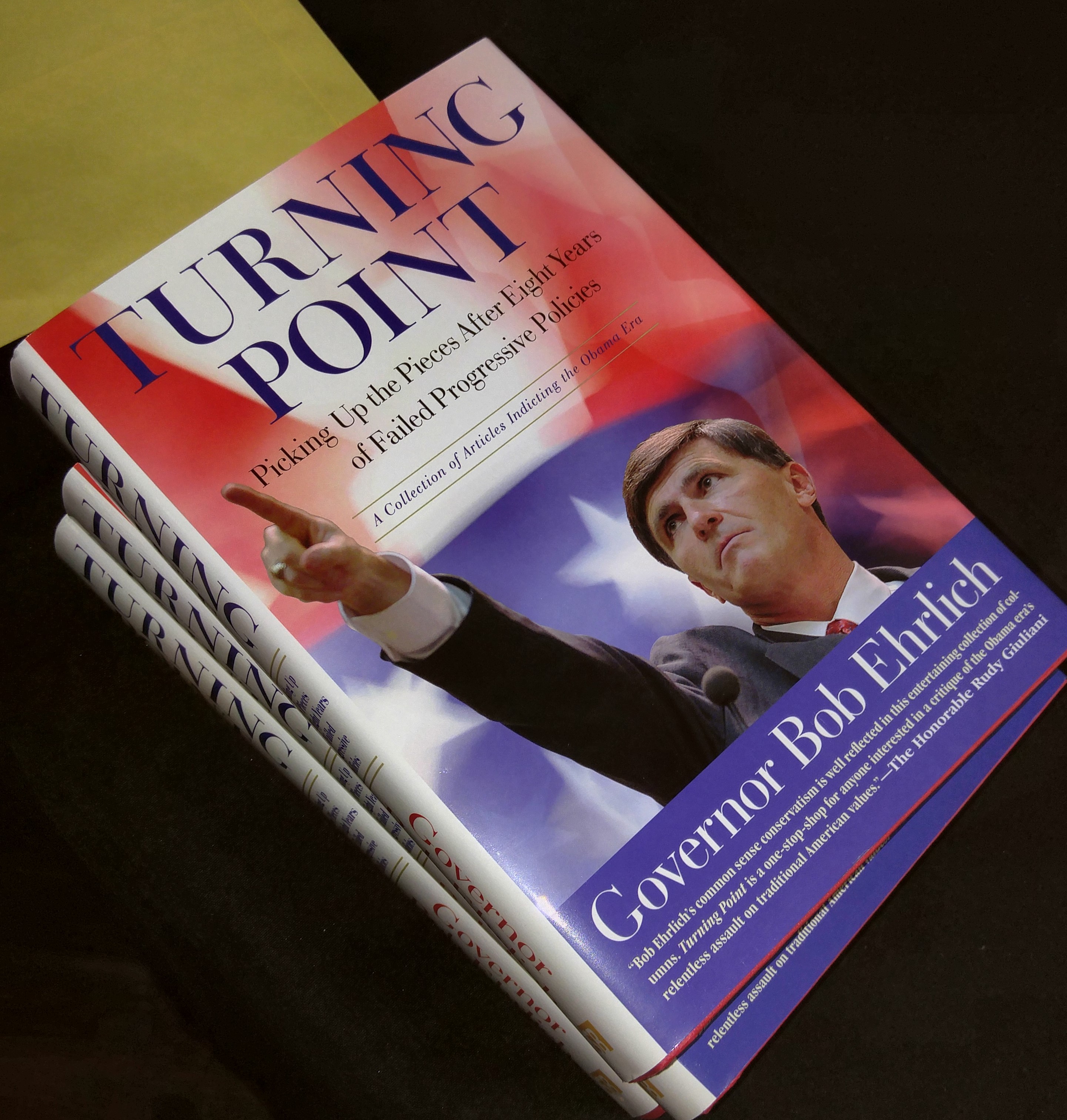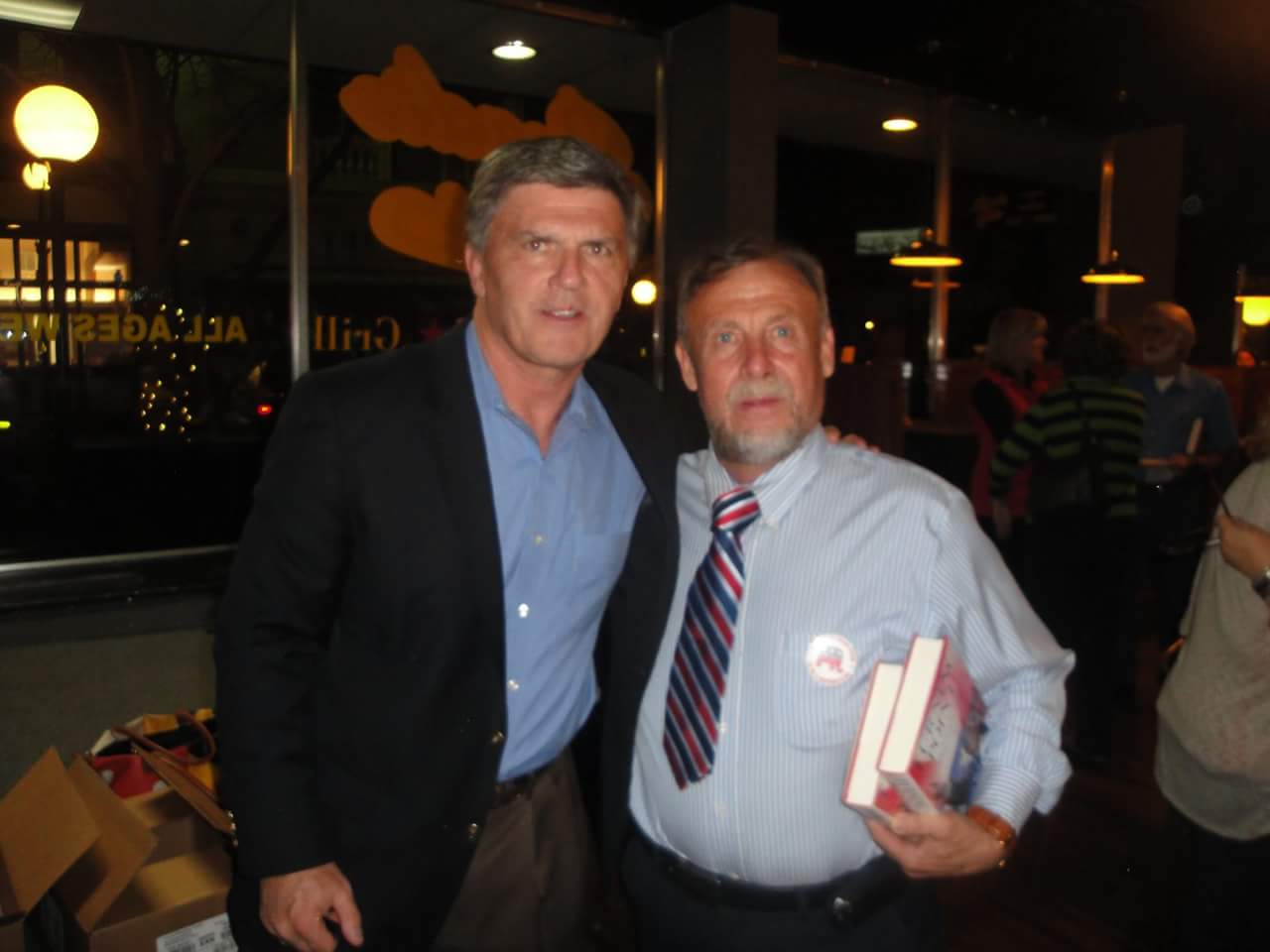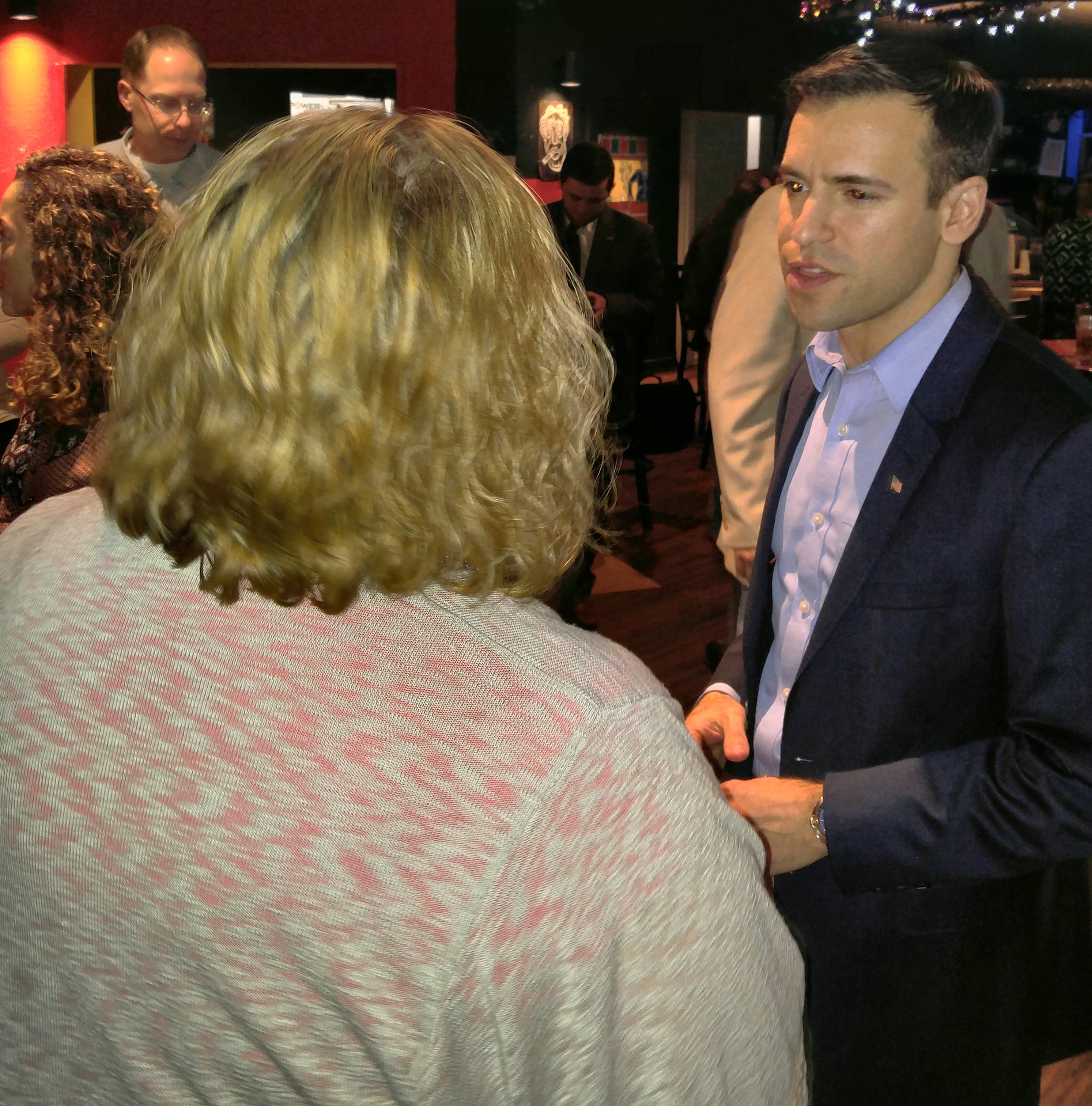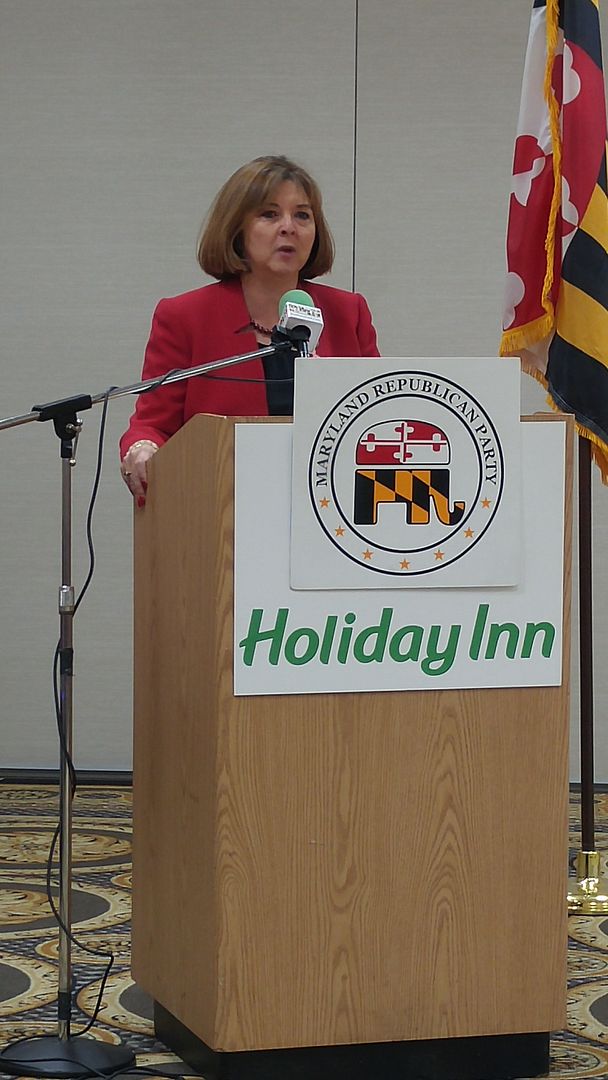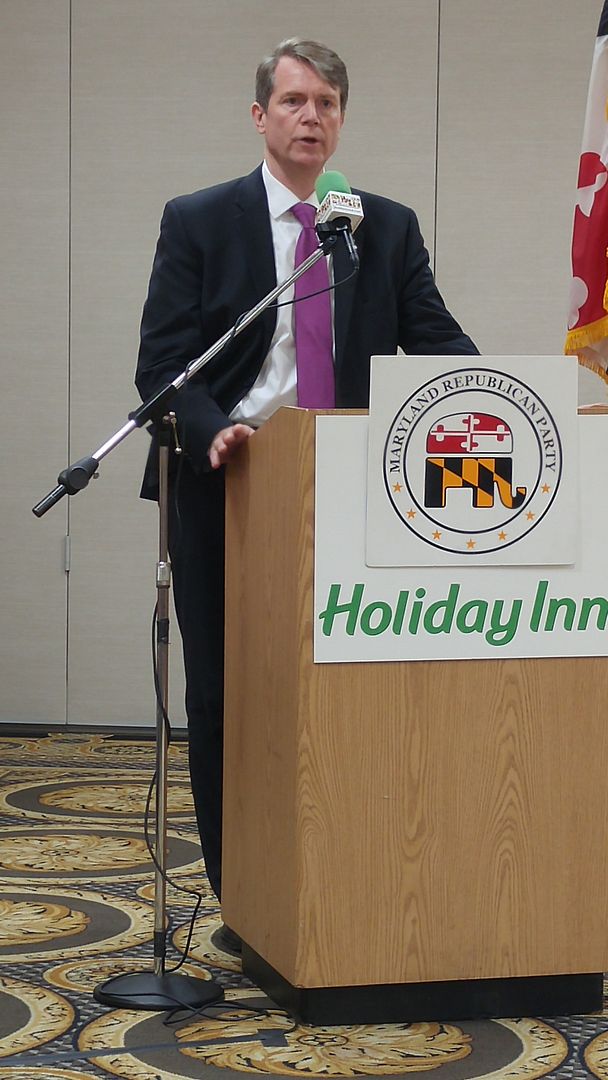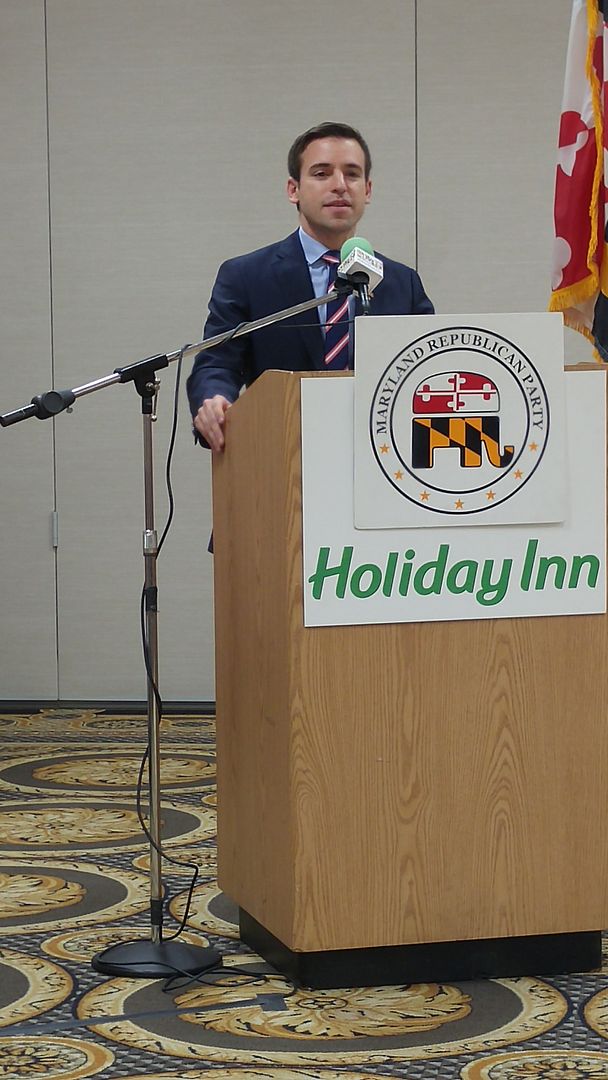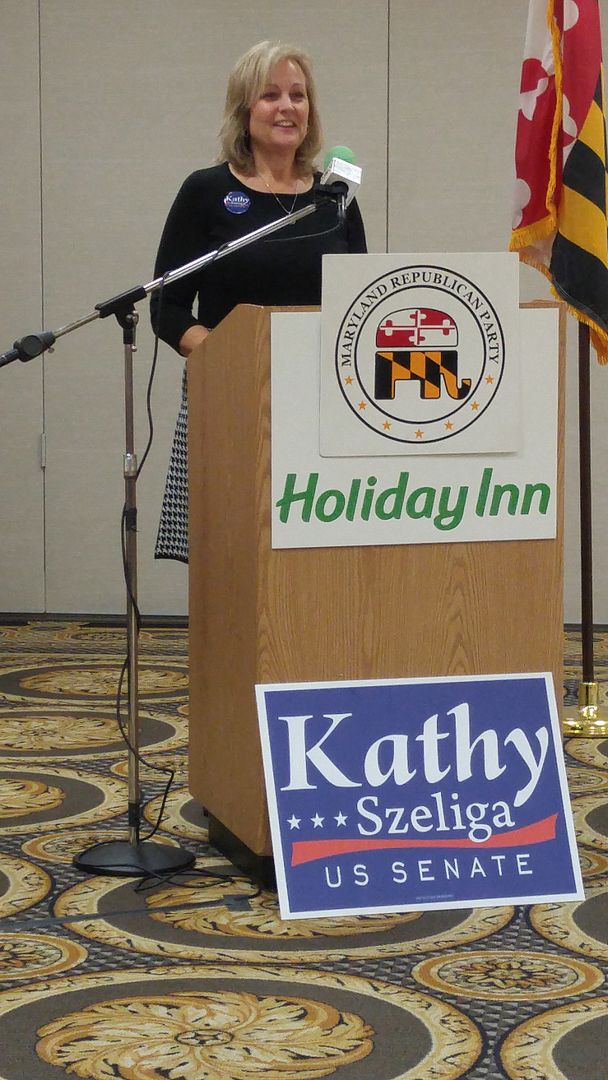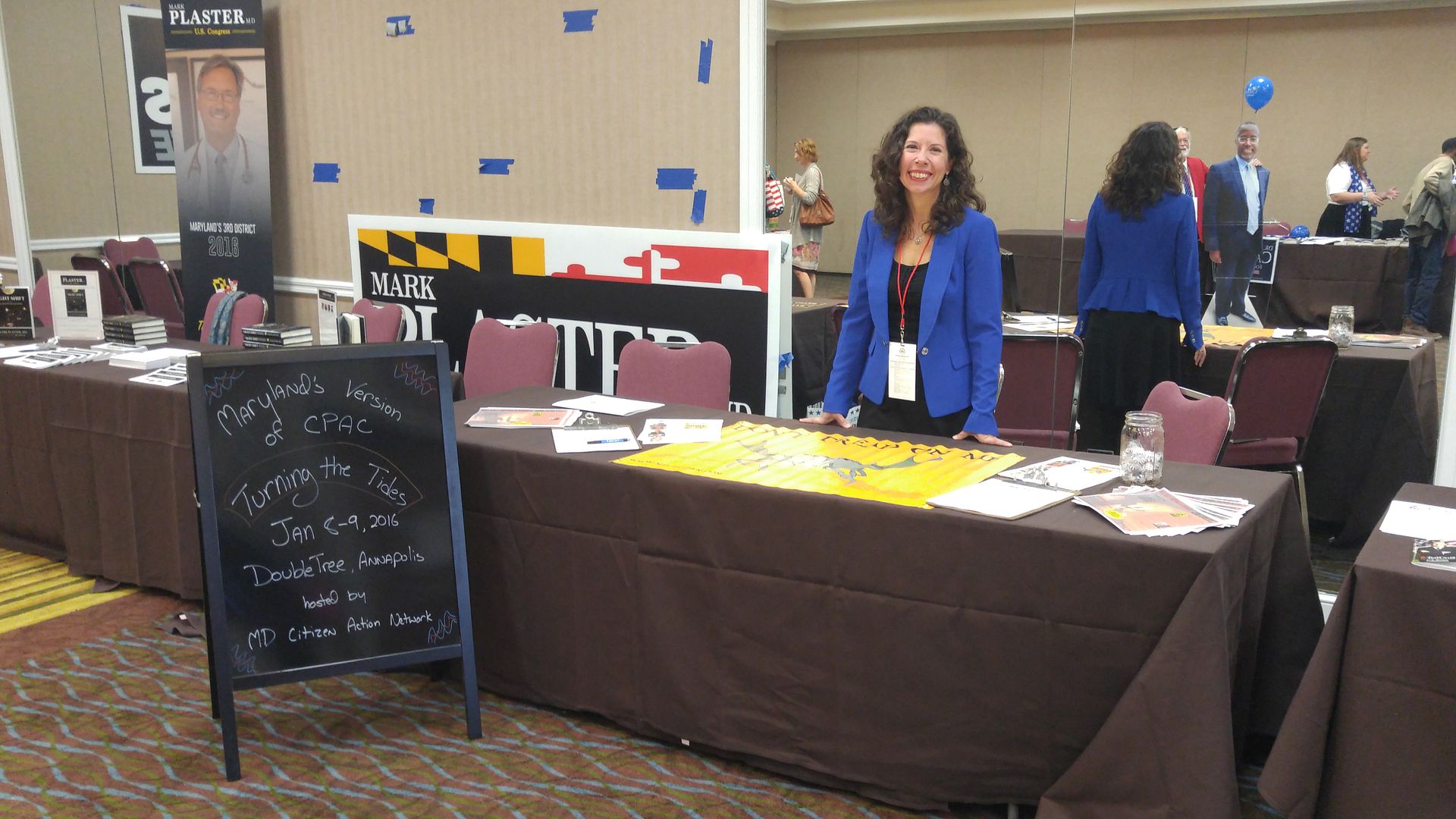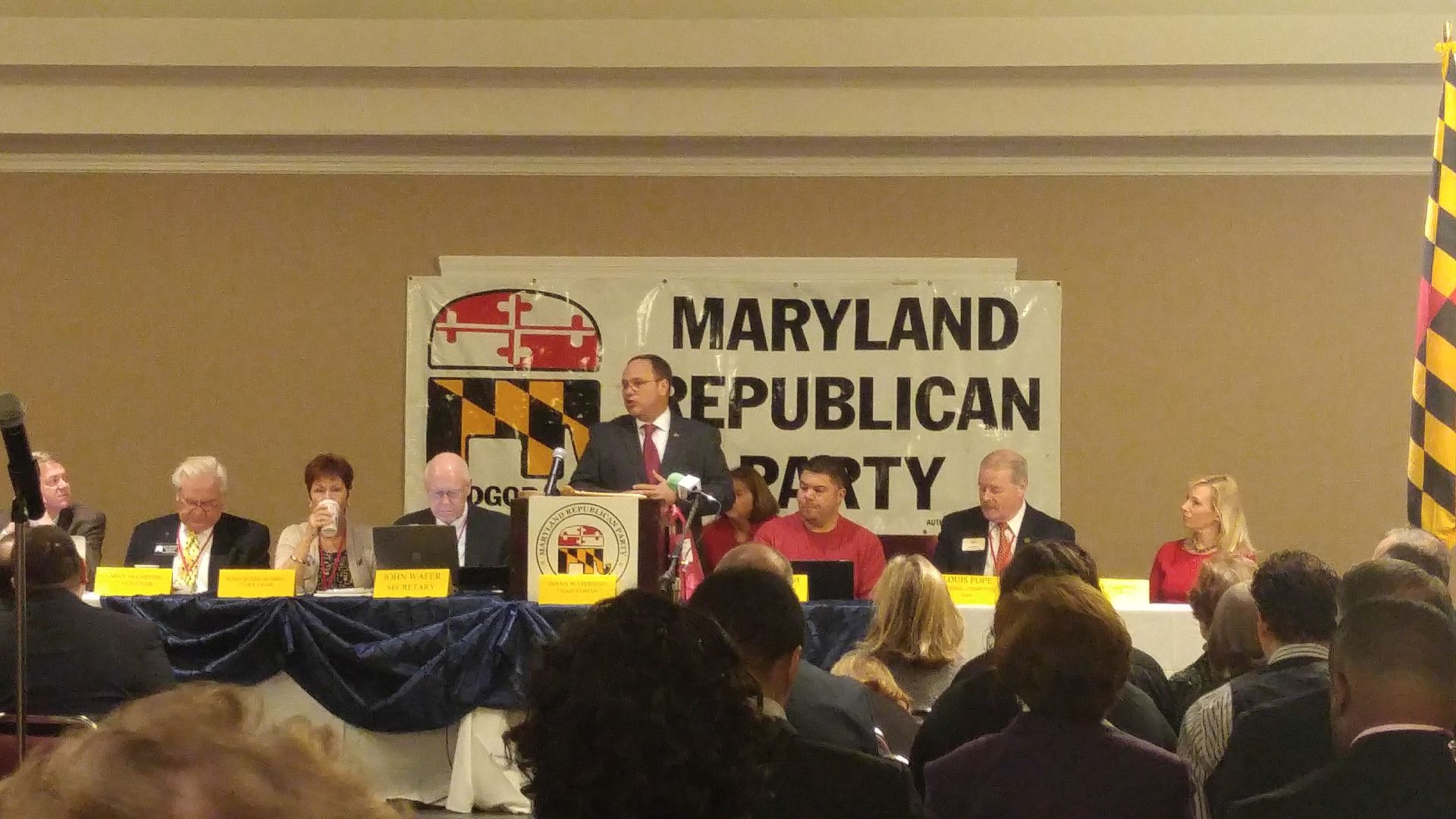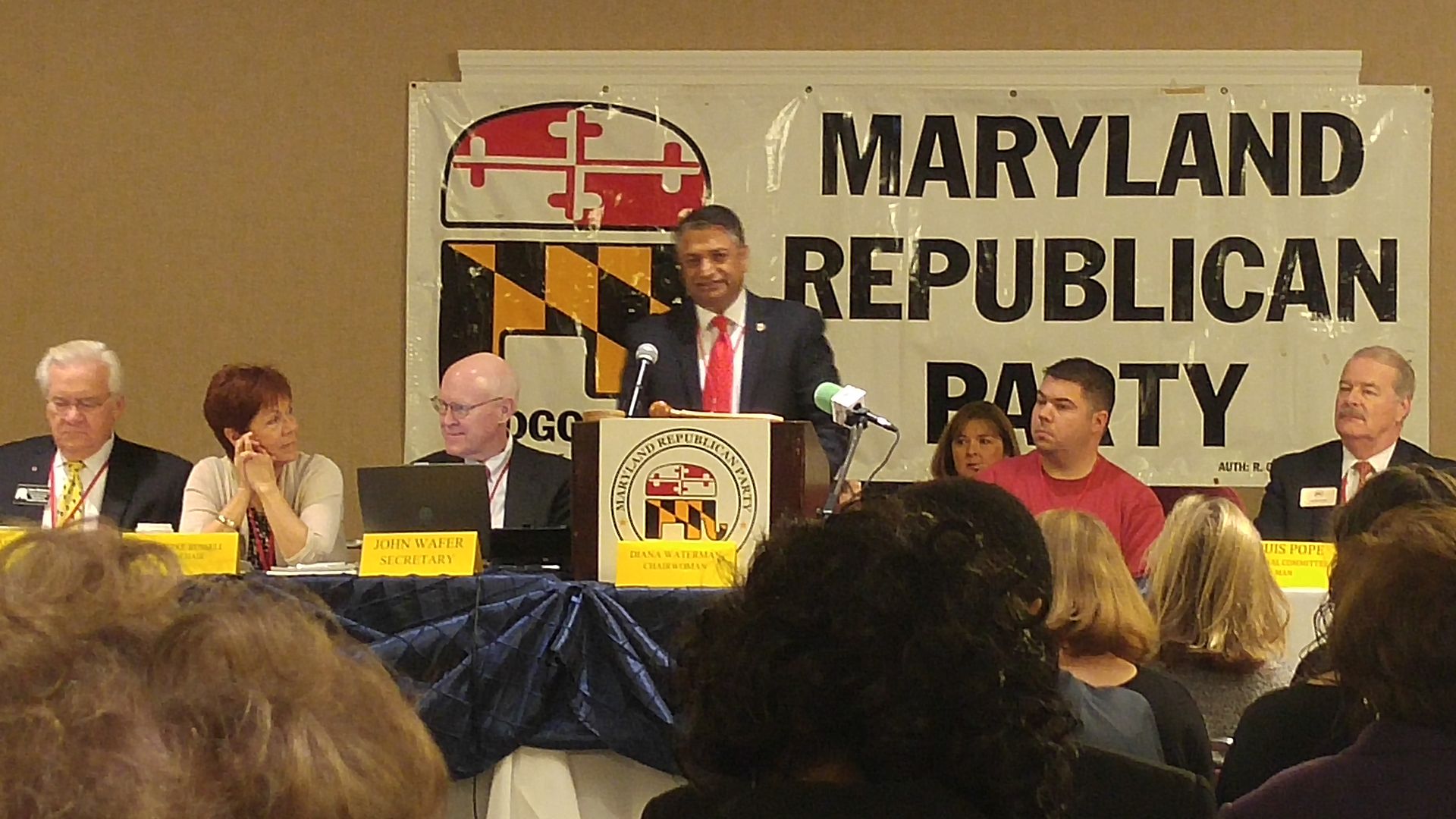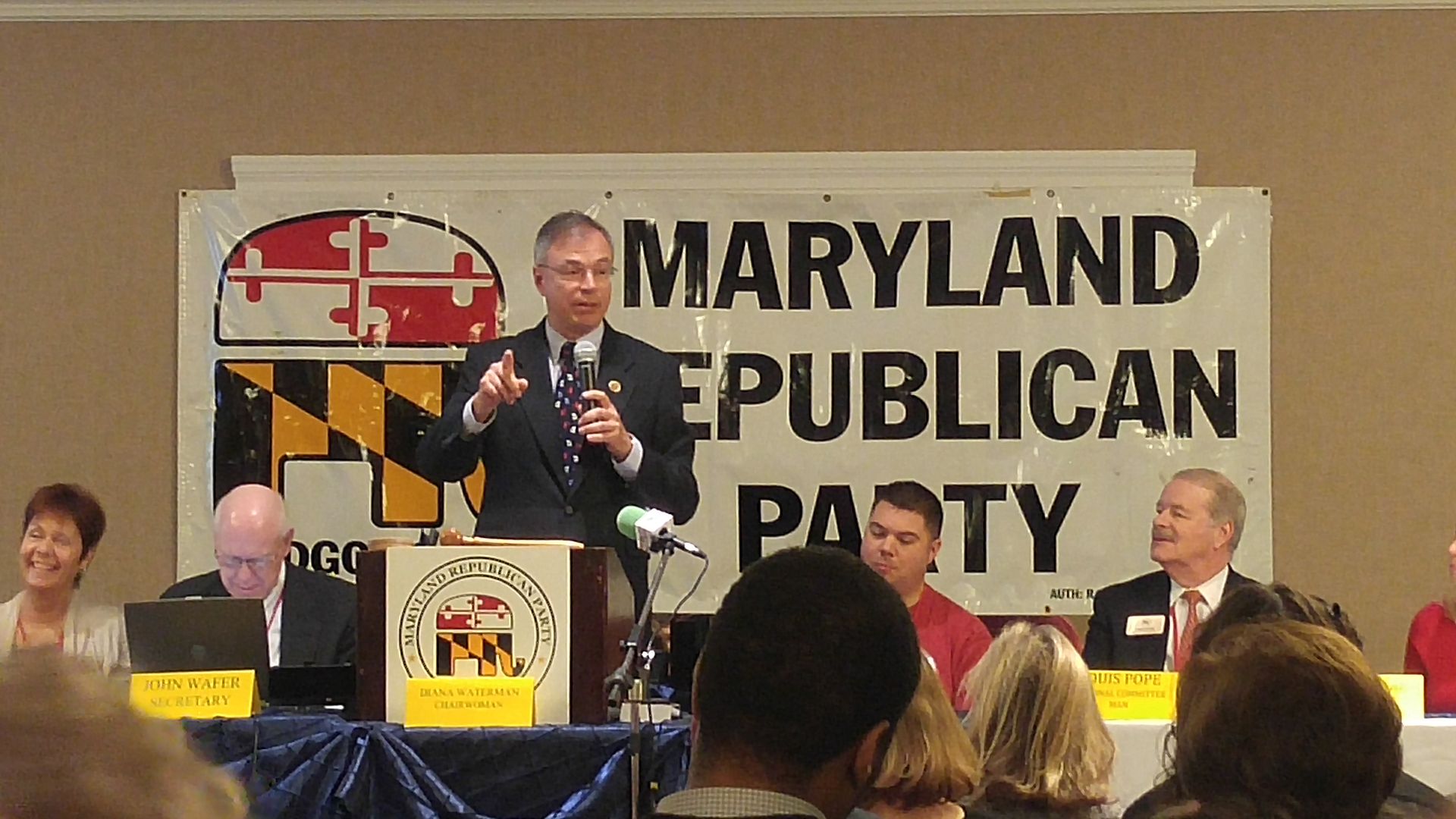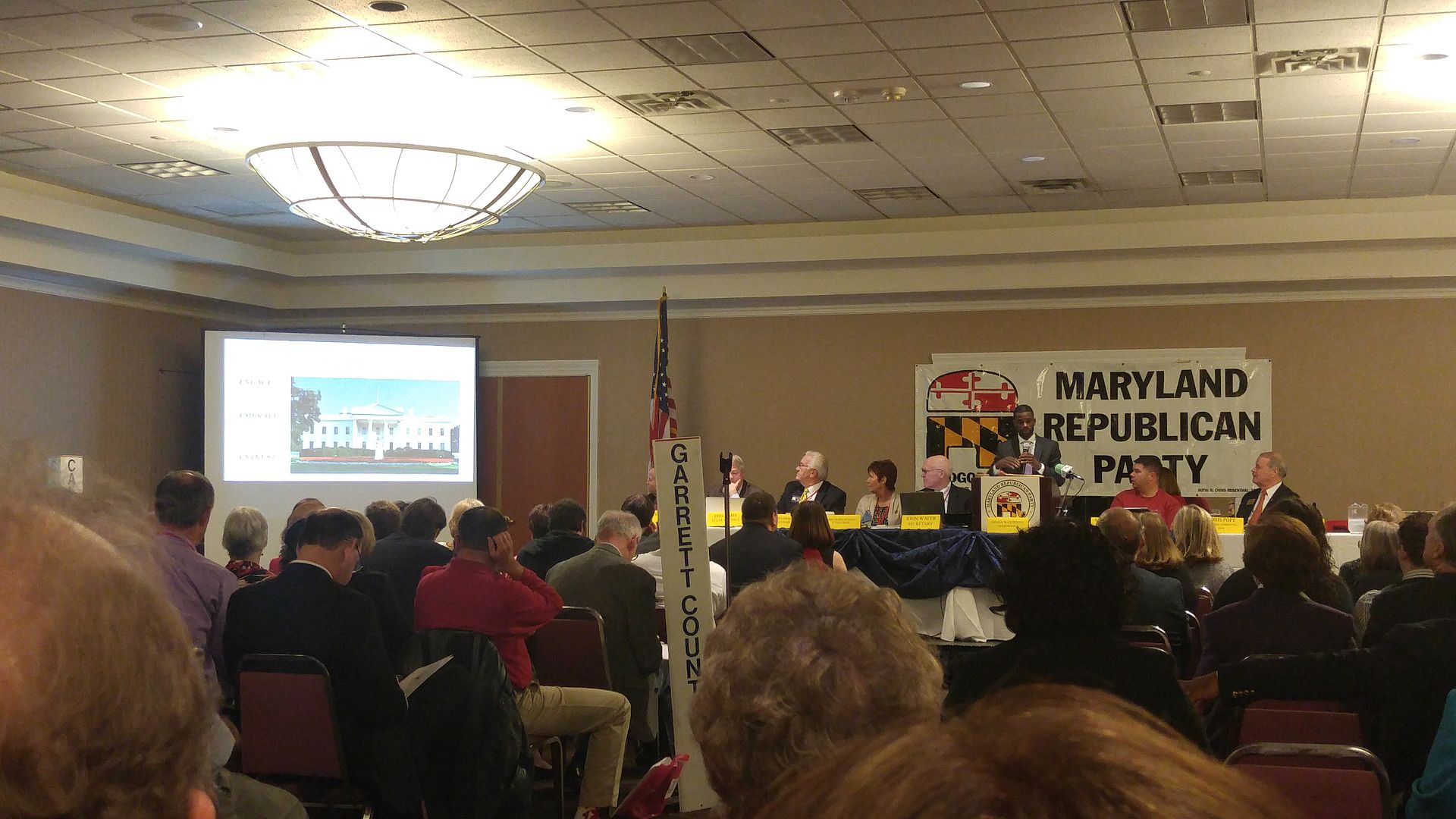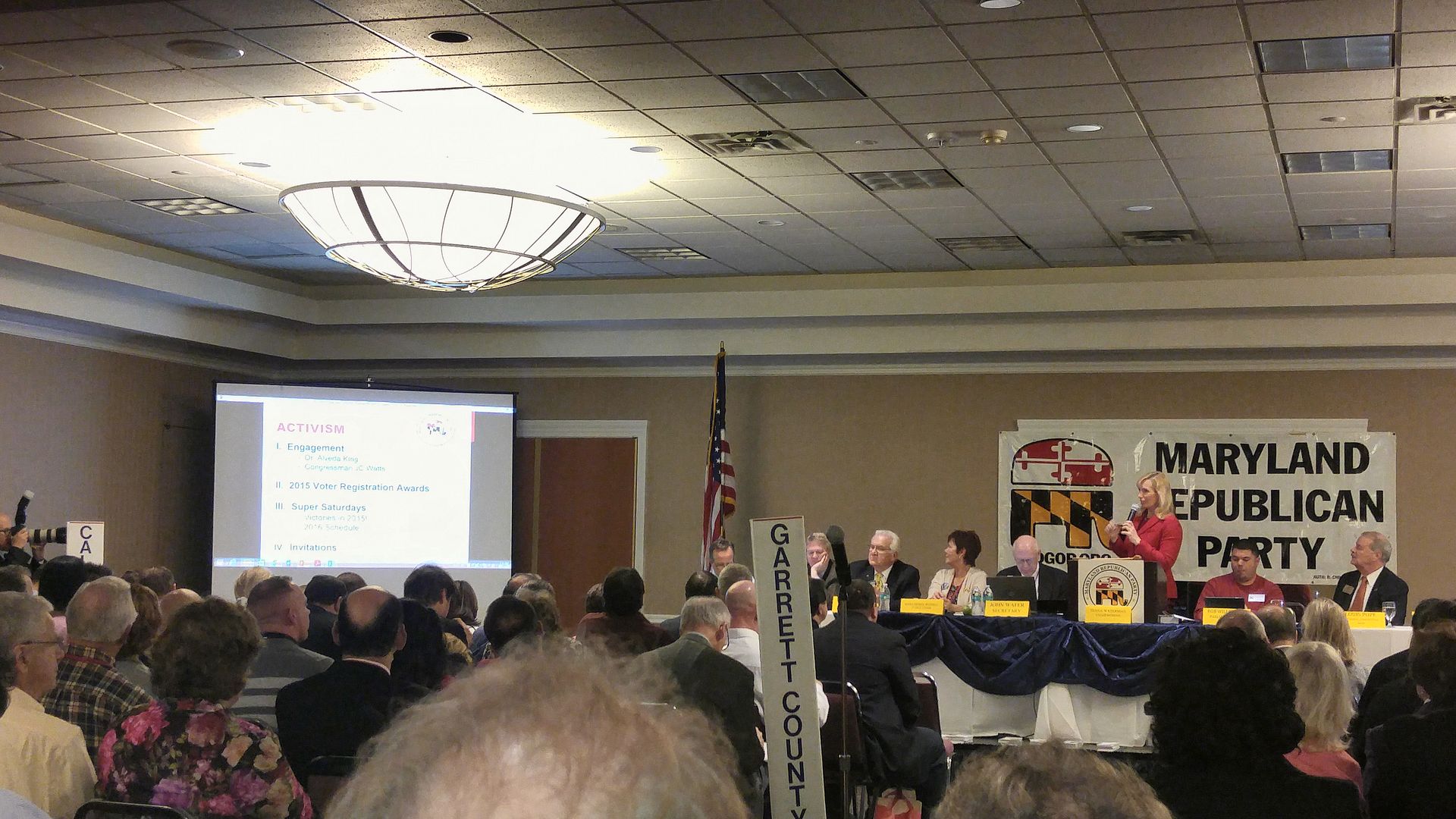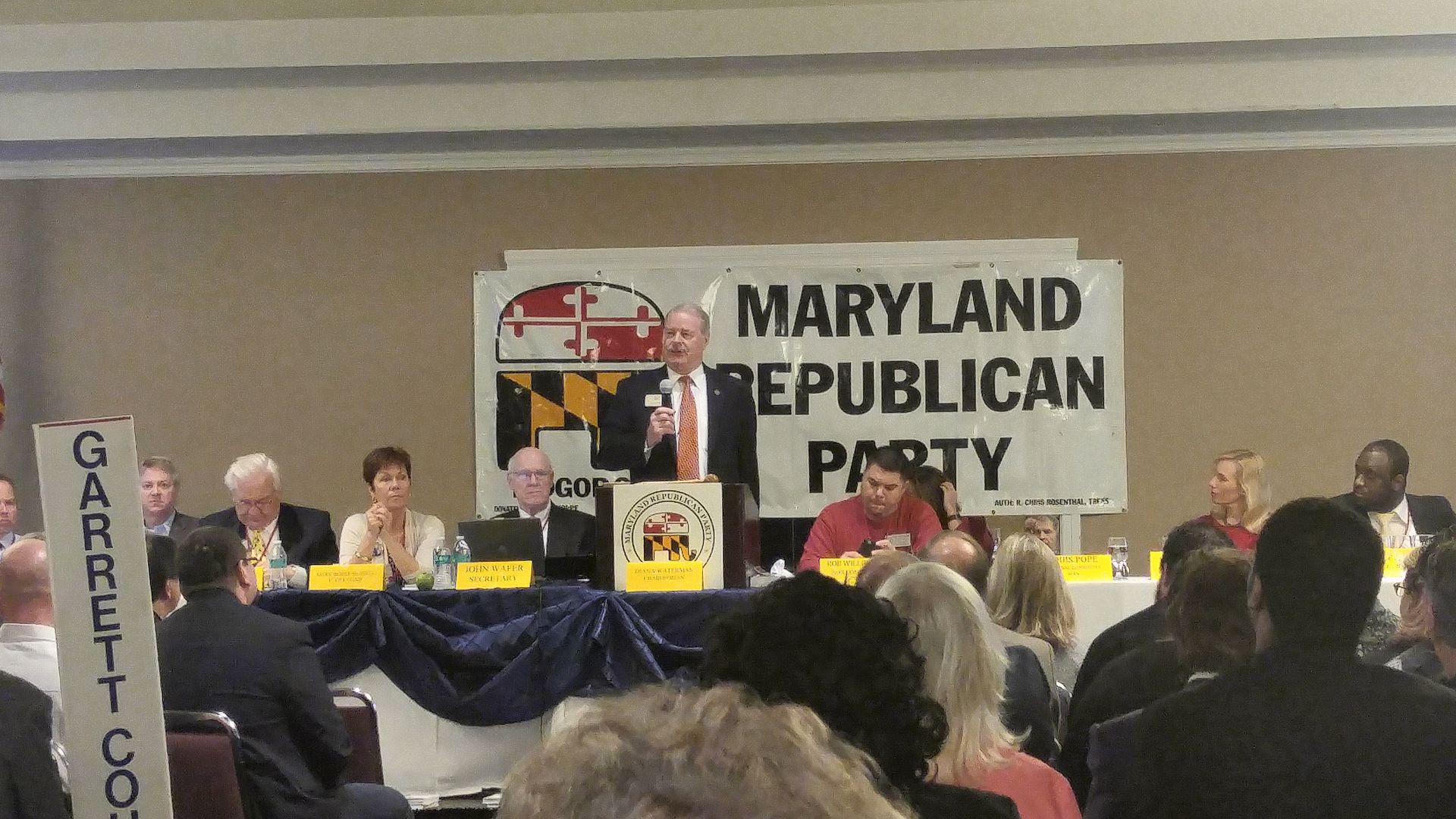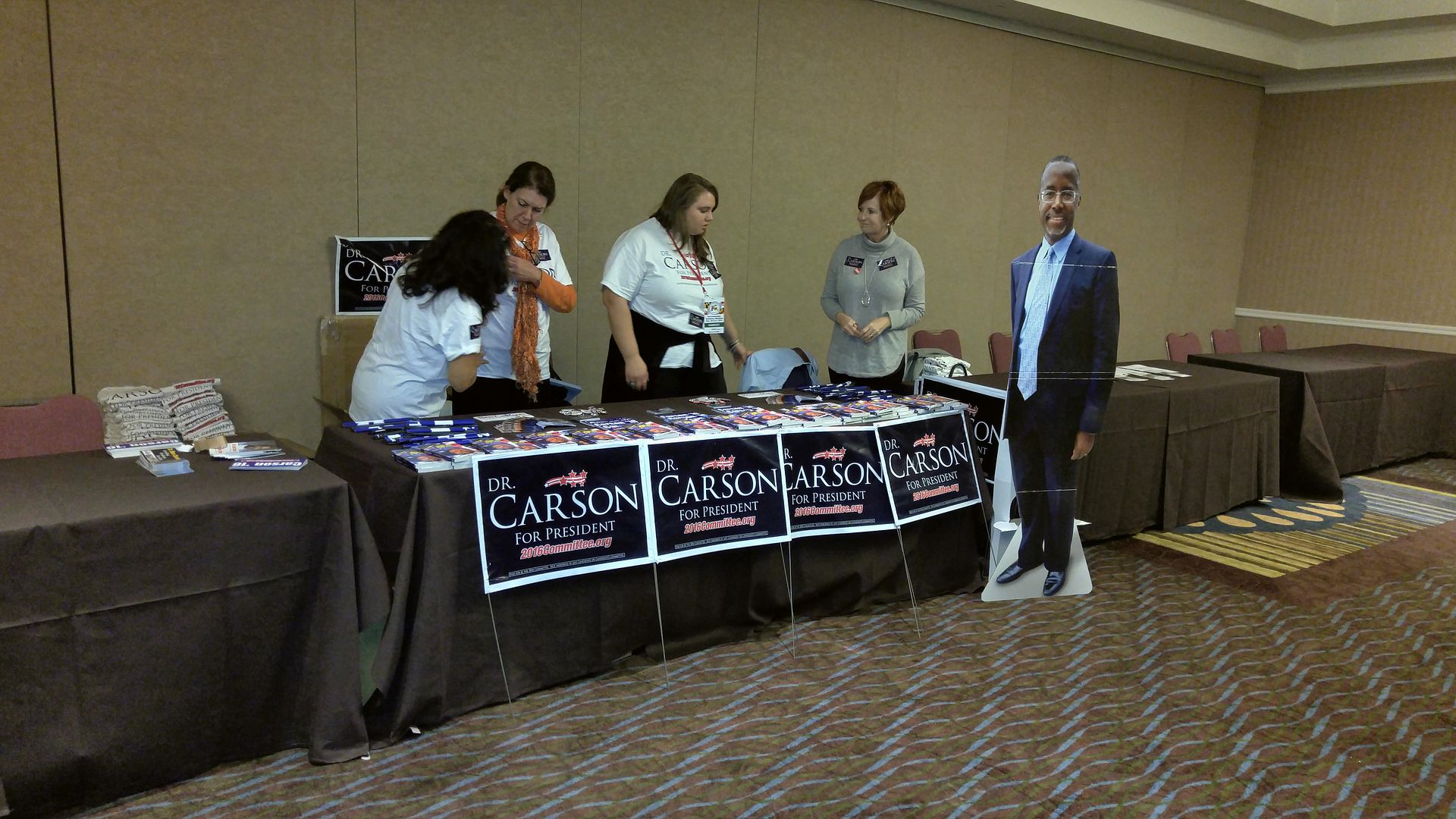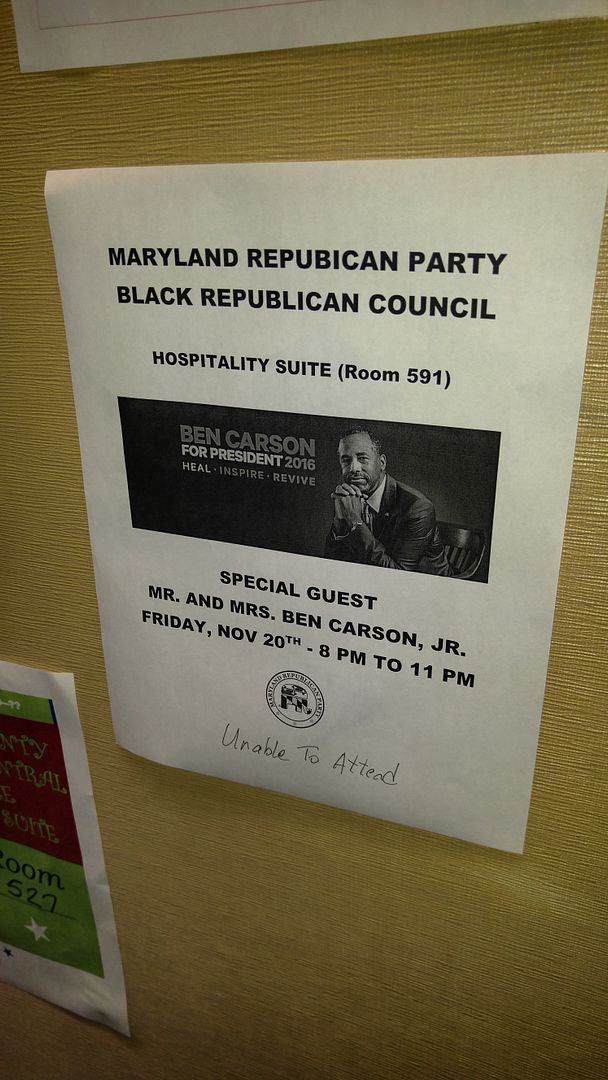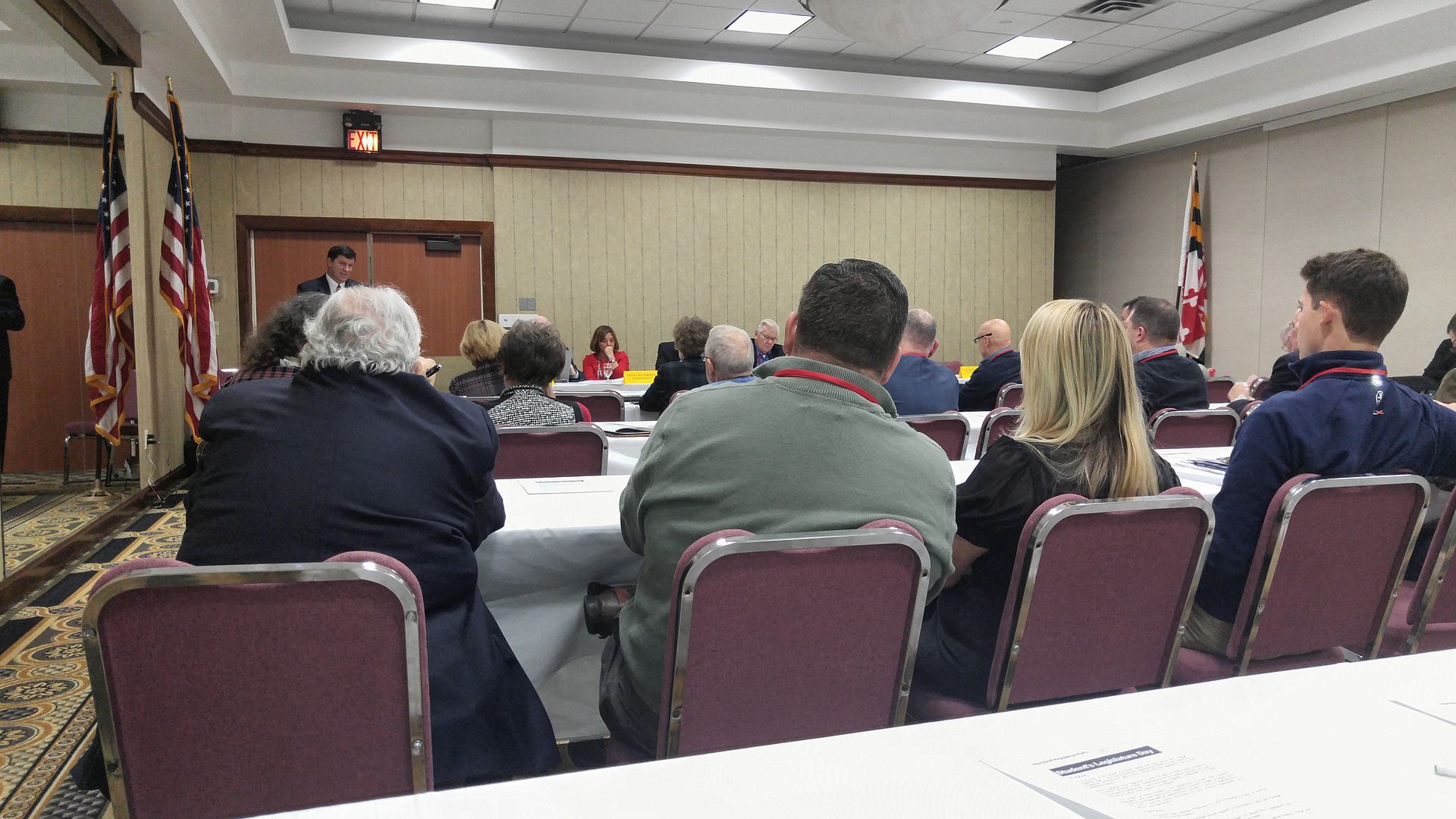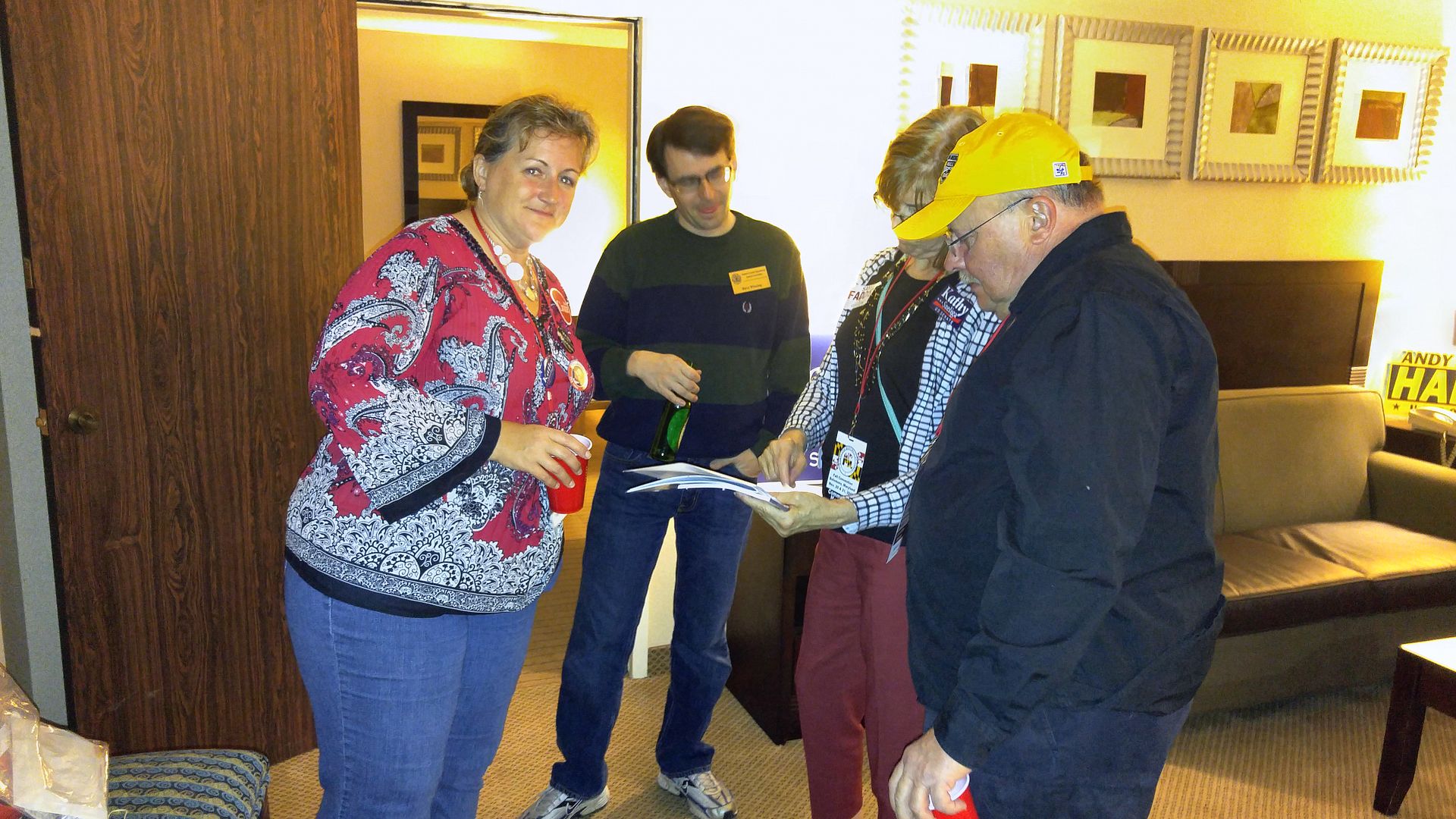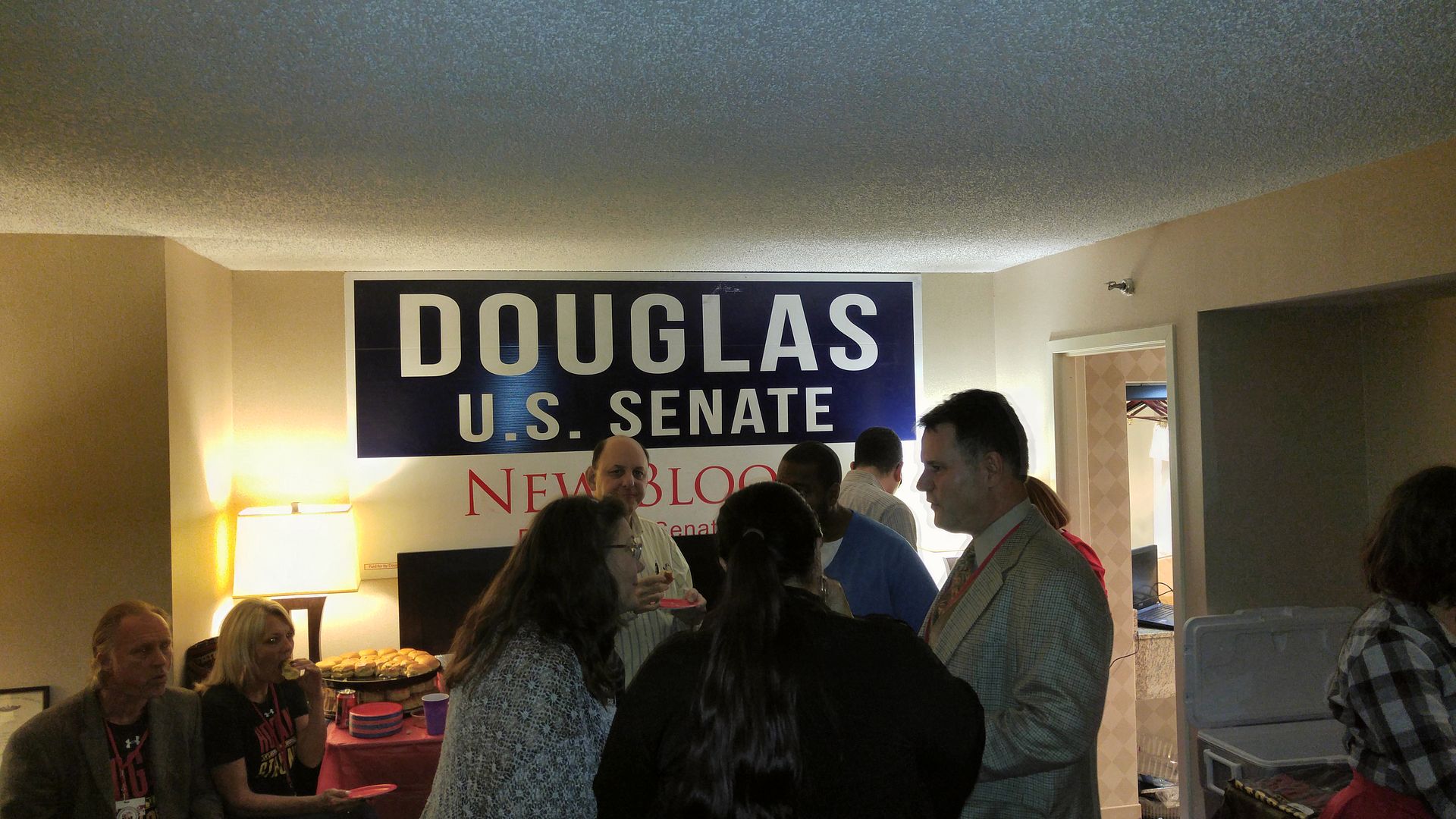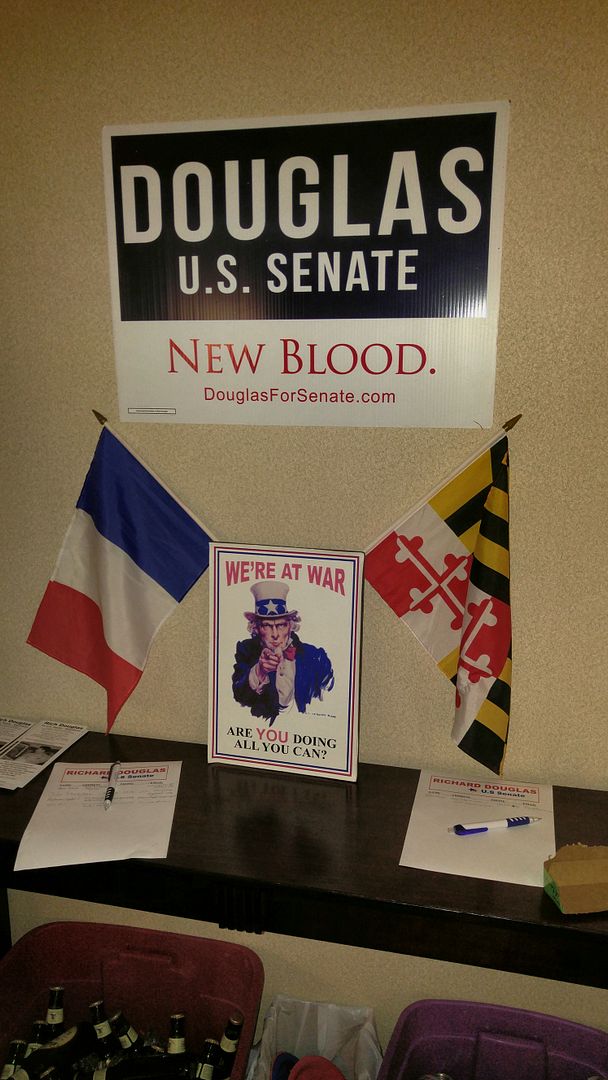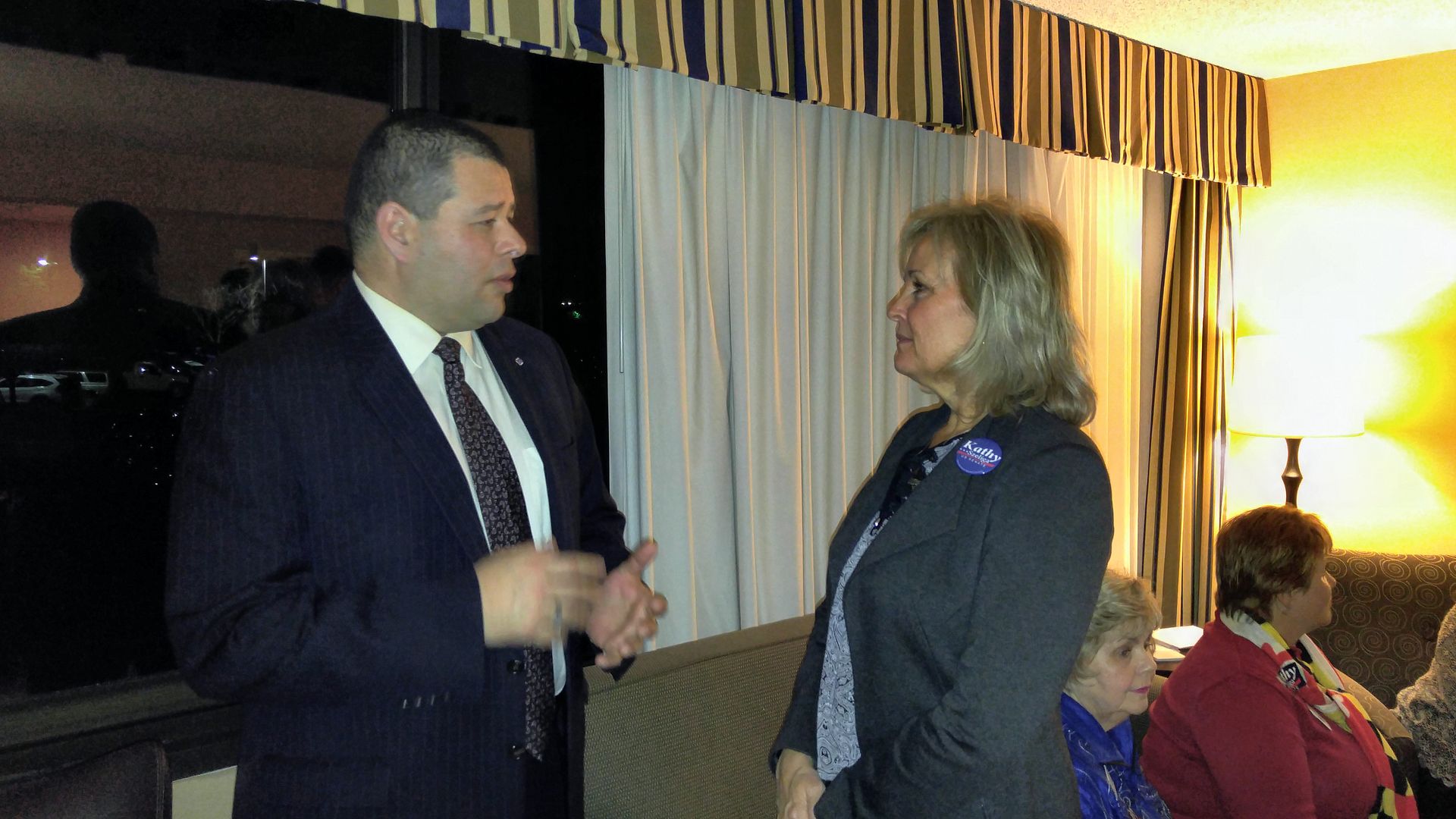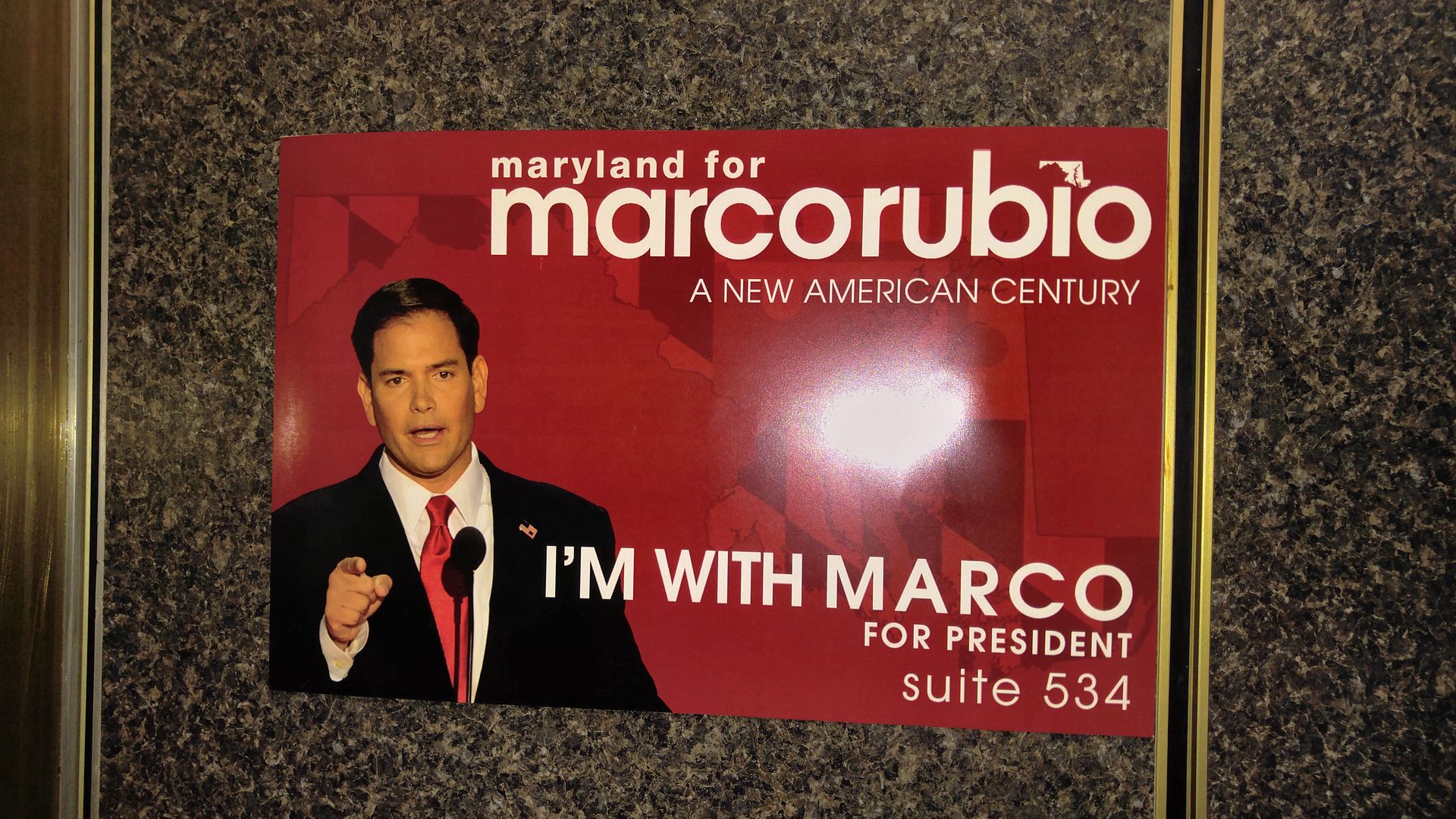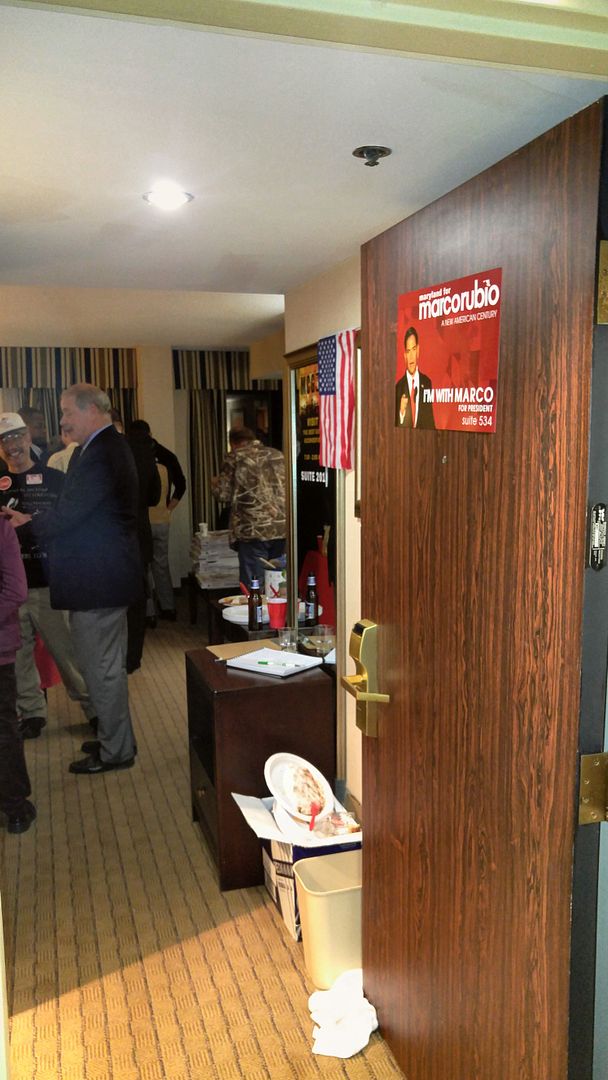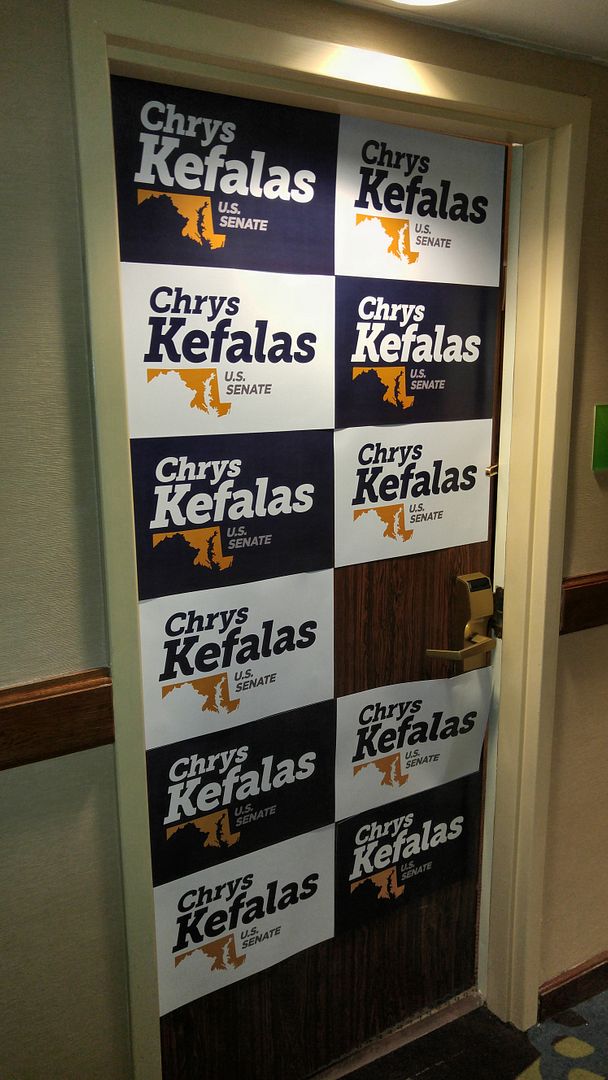Finishing my book draft has opened up my calendar just in time for the local political races to begin heating up. If you consider the June 26 primary as the “November” of this particular campaign, that means we are at about the mid-August of the race. But I’m already seeing the yard signs pop up for some of the local contests, so I decided over the last couple days to take a pretty comprehensive look at our two federal races: the battle for Maryland’s U.S. Senate seat and our local First District Congressional contest.
On the Senate side, thus far most of the news has come from the entry of the former PFC Bradley Manning, who has transitioned in identity to the female Chelsea Manning. (Never mind he was convicted of espionage and released just a few years into a 35-year sentence, much of it spent in the process of indulging a case of gender dysphoria.) Aside from he/she/it, there are the usual complement of perennial candidates and those who decided their first try for office would be for a statewide post. There are a total of eight Democrats on the ballot, but the prohibitive favorite among them is incumbent Senator Ben Cardin. The primary field looks similar to that in 2012 when Cardin last ran, with Manning probably getting about the same share (15%) as the doomed Senatorial campaign of current State Senator C. Anthony Muse while Cardin should retain his 75% or so. (Because it’s a state election year, you don’t have the opportunity for some officeholders to “run from cover” for a higher office – they forfeit the one they have to run. However, in the Sixth Congressional District, which is an open seat due to the departure of John Delaney for a quixotic Presidential bid, there are a couple of current state officeholders vying for the opening.)
Since I’m not voting on the Democrat side, though, my interest in this case is the GOP battle. As usual, there are a number of prospective candidates on the ballot: 2018 brought 11 aspirants to the fore, many of whom have played this game multiple times. For example, in 2016 Chris Chaffee was the (distant) runner-up to GOP Senate nominee Kathy Szeliga, John Graziani was 8th in the 14-person field, and Blaine Taylor was 9th – out of 10 Democrats. (Maybe he’s a Trump Republican now?) Brian Vaeth previously ran for Senate in 2012 as well. (It’s possible he may have suspended his 2018 run, anyway.) Chaffee was a definite surprise given that he was never polled into the 2016 Senate race, but he beat more established candidates such as Richard Douglas and Chrys Kefalas.
Considering the incumbent Senator is well-funded, I thought the best place to begin culling the field was to see who had actually set up an FEC account, which is a must for candidates who want to fundraise beyond a certain point. (Despite the fantasy some have of running a completely grassroots effort to win a statewide office, that’s not happening.) It turns out the only one to actually have a report is Charles “Sam” Faddis, who decided not to follow through and file this time around. (Faddis was an unsuccessful Congressional challenger to Steny Hoyer a few years ago.) But four in the field have established FEC accounts earlier this year so their first quarterly report just came due: Chaffee, Tony Campbell, Christina Grigorian, and Albert Binyahmin Howard.
Out of that quartet, I’ve already discounted the chances of Chaffee and Howard. Why?
Well, if you look at Chaffee’s website, you’ll see that it’s a poorly-written one. Granted, we have a President who mangles the English language on a regular basis, but one thing that I’ve come to believe is that a good-looking website conveys a good impression. And it’s difficult to get past the generalities and platitudes that stand in for his issue positions. He would really have to sell me in a debate to have a chance at getting my vote, which is discouraging because I suspect he is rather conservative. Honestly, I think his second-place finish last time was by virtue of being first on the ballot since few people knew the players aside from Kathy Szeliga. Chaffee won’t have that leg up this time because Tony Campbell is listed first.
Even worse is the website for Howard, whose chief claim to fame seems to be that of being the founder of Hebrews for Trump. Okay, then.
So I’m down as of now to Campbell and Grigorian. Ladies first.
Christina has started off on the wrong foot with me in two respects: number one, her website is nice but insofar as issues go I see nothing but general platitudes of being an advocate for the state and assisting Governor Hogan in his efforts. Yet to be a Senator from Maryland in this current political reality is to be (hopefully) fortunate enough to take office as Hogan begins his second term because in order to save America the state of Maryland has to endure a world of hurt for a few years, and the GOP is going to take the blame to a point where 2022 local elections would be a bloodbath. This is because the state has foolishly put most of its economic and job creation eggs in the basket of an ever-expanding federal government when the real solution is rightsizing our federal bureaucracy to the extent it’s allowed to be by the Constitution. Hogan is best-equipped to solve that problem as a more or less business-friendly governor, albeit one who gets it seriously wrong on some good job-creation issues like fracking in Western Maryland.
My other issue with Grigorian is making her first issue-oriented video one of celebrating International Women’s Day as well as making the point Maryland has no female representation in Congress. Okay, I’m going to admit I’m a little biased on this, but making a case about being a female candidate is a little Hillary-esque. Maryland had a female Senator for three decades and all it did was set the country back a little bit. Certainly I know of a good share of women who would make great Senators or members of Congress, but the reason they would be so is because they don’t base their politics on their gender.
Grigorian is so far to me coming off as a moderate, based on her bland answers to key issues. We really don’t need a woman in the Senate if she’s a clone of Lisa Murkowski or Susan Collins, the bottom two Republicans as graded by Heritage Action. (A third woman, Shelley Capito, is in the bottom 5 – none of the five female GOP Senators are in their top ten.) She has a lot to sell me on, too.
What I will say about Tony Campbell is that he has manned up and apologized for a couple past mistakes, the chief one being part of Republicans for Obama. Tony’s not going to make me jump up and down in supporting him, but based on what I’ve learned about his positions I’m leaning his way. I think with a little bit of work he could be an effective, relatively conservative Senator. But he has to win first.
Now I’ll sharpen the focus a little bit to the First District race. You know, they keep talking on the Left about “flipping the First” but to do so would take the right candidate and electorate. Unfortunately for the Democrats, the right candidate for the job is the only one who hasn’t filed FEC paperwork and that would be “conservative Democrat” Erik Lane. (Even so, the “right electorate” went away when Martin O’Malley submitted his Congressional plan in 2011. That made the First a highly Republican district that even Donald Trump – he of the 34% statewide vote – won handily.) As for the rest, I tend to believe the “establishment” Democrats and media (but I repeat myself) would prefer to see Jesse Colvin win because that would immediately be portrayed as our version of the Conor Lamb race in Pennsylvania. (He has the most campaign cash to spend, too.) Perhaps their second choice would be Allison Galbraith, who is a single mom and rather spunky both in person and online – I know because I’ve sparred with her on several occasions.
But you also have the Eastern Shore factor, and two candidates hail from our side of the Bay – Michael Brown and Michael Pullen. So parochial voters may opt to elect them, too.
And then you have Andy Harris, who hasn’t had a primary where he’s unopposed since 2012. Then again, since first being nominated in 2008 in a surprise upset of longtime erstwhile moderate GOP Congressman Wayne Gilchrest (who will likely continue his semi-annual biennial tradition of endorsing the Democrat in the race) Harris has dispatched primary foes like King Kong swatting away airplanes while perched on a skyscraper: 68% against Rob Fisher in 2010, 78% against Jonathan Goff, Jr. in 2014, and the same 78% against a tag team of Goff, Sean Jackson, and former Delegate Michael Smigiel in 2016. Martin Elborn and Lamont Taylor may be nice guys, but they probably won’t do any better – nor should they. It would be the Democrats’ dream if one of these two somehow won the primary because they aren’t coming across to me as very serious candidates. That would be about the only way the Democrats could level the field in this district.
I’ve liked Andy Harris as a legislator since his days in the Maryland General Assembly – Andy was, for several years until 2016, the only Maryland legislator to achieve a perfect session score on the monoblogue Accountability Project., Admittedly, there have been a couple times I didn’t vote for him: come on, when your Libertarian friend is running for Congress, how can you not vote for him when you know the district is safely Republican? And I liked the last guy the LP had (Matt Beers), too – he was ready to shrink government more than Andy would, and that’s saying something.
But this year’s Libertarian model seems to be the left-libertarian type, so there’s no excuse for me not to vote to retain Andy Harris for another term in both the primary and general elections. It makes the town hall meetings that much more entertaining.
I really don’t need to go over the state races in much detail because all three GOP nominees are set; meanwhile, the only suspense on the Democrat side is whether Tweedledum x 5 or Tweedledee x 4 will win the nod for Governor. The early polling favorite is PG County Executive Rushern Baker. In fact, my ballot on the GOP side is very boring – I have no State Senator, Delegate, or county race to vote in except for the downballot Clerk of the Court and Central Committee races. So this is probably all the analysis you get.
But I’ll keep an eye on it nonetheless in case I’m moved to say more.


